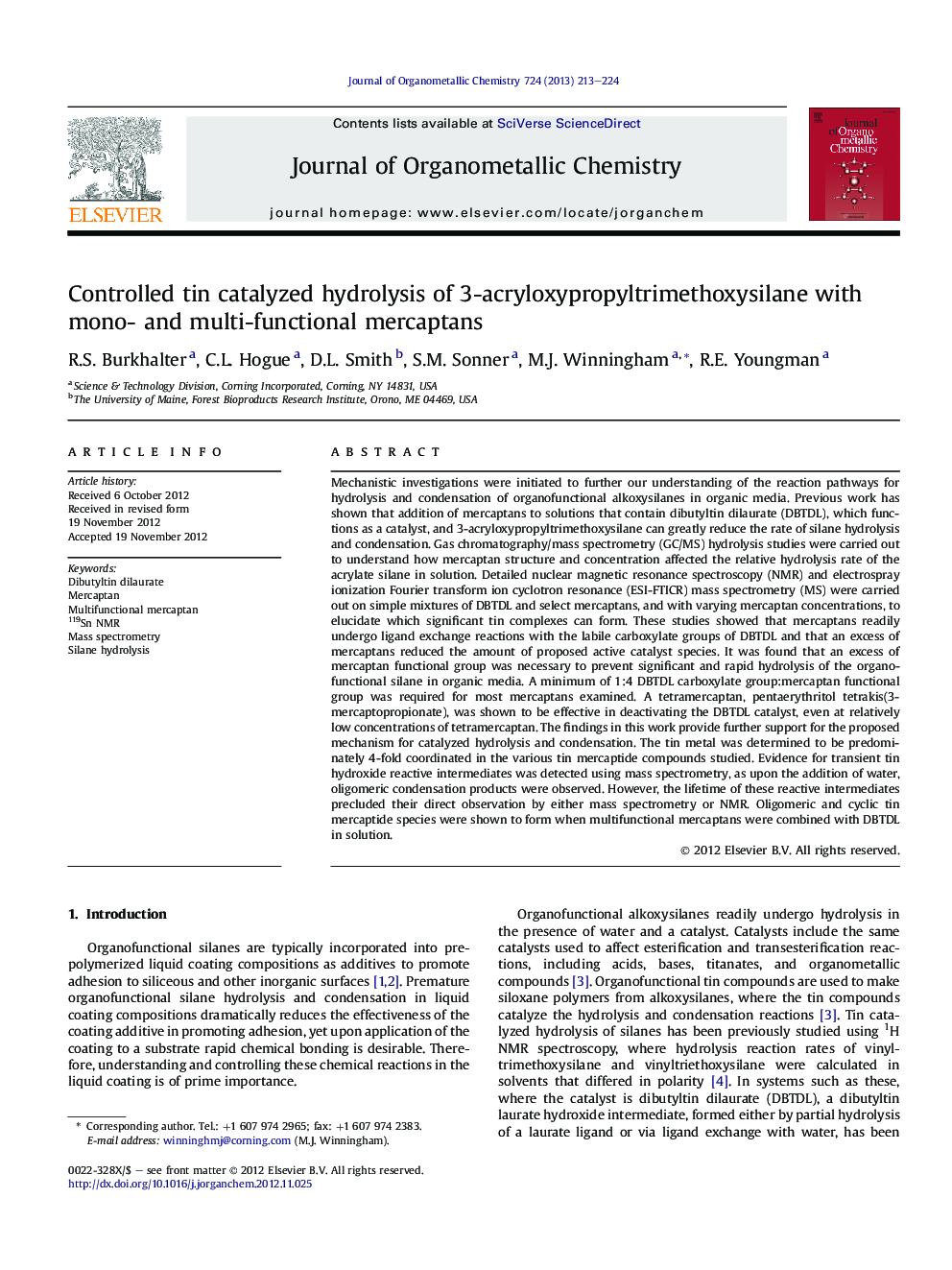| کد مقاله | کد نشریه | سال انتشار | مقاله انگلیسی | نسخه تمام متن |
|---|---|---|---|---|
| 1321969 | 1499914 | 2013 | 12 صفحه PDF | دانلود رایگان |

Mechanistic investigations were initiated to further our understanding of the reaction pathways for hydrolysis and condensation of organofunctional alkoxysilanes in organic media. Previous work has shown that addition of mercaptans to solutions that contain dibutyltin dilaurate (DBTDL), which functions as a catalyst, and 3-acryloxypropyltrimethoxysilane can greatly reduce the rate of silane hydrolysis and condensation. Gas chromatography/mass spectrometry (GC/MS) hydrolysis studies were carried out to understand how mercaptan structure and concentration affected the relative hydrolysis rate of the acrylate silane in solution. Detailed nuclear magnetic resonance spectroscopy (NMR) and electrospray ionization Fourier transform ion cyclotron resonance (ESI-FTICR) mass spectrometry (MS) were carried out on simple mixtures of DBTDL and select mercaptans, and with varying mercaptan concentrations, to elucidate which significant tin complexes can form. These studies showed that mercaptans readily undergo ligand exchange reactions with the labile carboxylate groups of DBTDL and that an excess of mercaptans reduced the amount of proposed active catalyst species. It was found that an excess of mercaptan functional group was necessary to prevent significant and rapid hydrolysis of the organofunctional silane in organic media. A minimum of 1:4 DBTDL carboxylate group:mercaptan functional group was required for most mercaptans examined. A tetramercaptan, pentaerythritol tetrakis(3-mercaptopropionate), was shown to be effective in deactivating the DBTDL catalyst, even at relatively low concentrations of tetramercaptan. The findings in this work provide further support for the proposed mechanism for catalyzed hydrolysis and condensation. The tin metal was determined to be predominately 4-fold coordinated in the various tin mercaptide compounds studied. Evidence for transient tin hydroxide reactive intermediates was detected using mass spectrometry, as upon the addition of water, oligomeric condensation products were observed. However, the lifetime of these reactive intermediates precluded their direct observation by either mass spectrometry or NMR. Oligomeric and cyclic tin mercaptide species were shown to form when multifunctional mercaptans were combined with DBTDL in solution.
Multifunctional mercaptans form oligomeric and cyclic tin mercaptide species when added to dibutyltin dilaurate in solution. Catalyst activity toward silane hydrolysis and condensation is greatly reduced when an excess of mercaptans is added, where multifunctional mercaptans were found to be particularly effective.Figure optionsDownload as PowerPoint slideHighlights
► Excess of mercaptan functional group was necessary to deactivate organotin catalyst (DBTDL).
► Multifunctional mercaptans were more effective than monofunctional mercaptans in deactivating DBTDL catalyst.
► Oligomeric and cyclic tin mercaptide species were shown to form when multifunctional mercaptans were combined with DBTDL.
Journal: Journal of Organometallic Chemistry - Volume 724, 15 January 2013, Pages 213–224